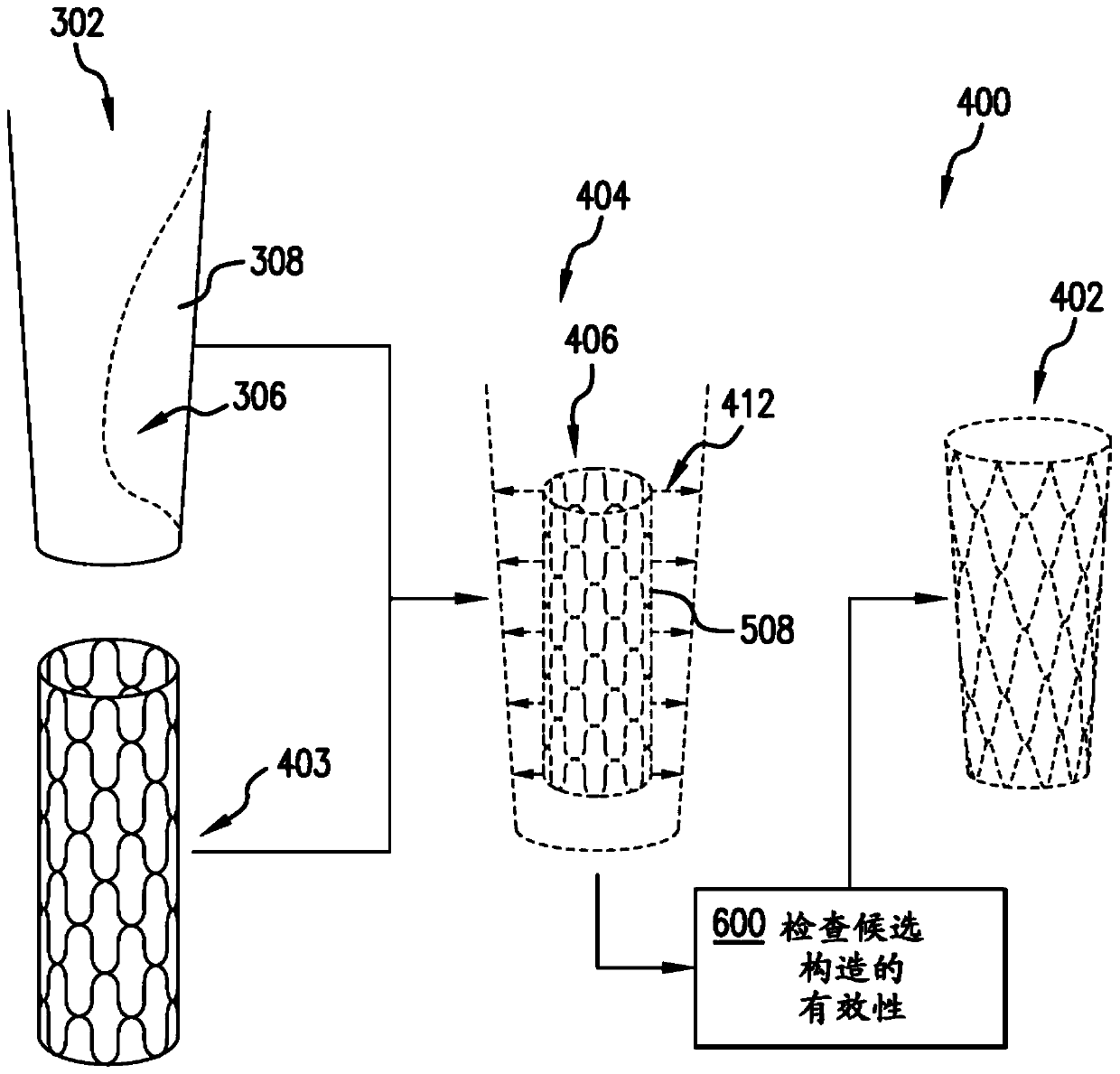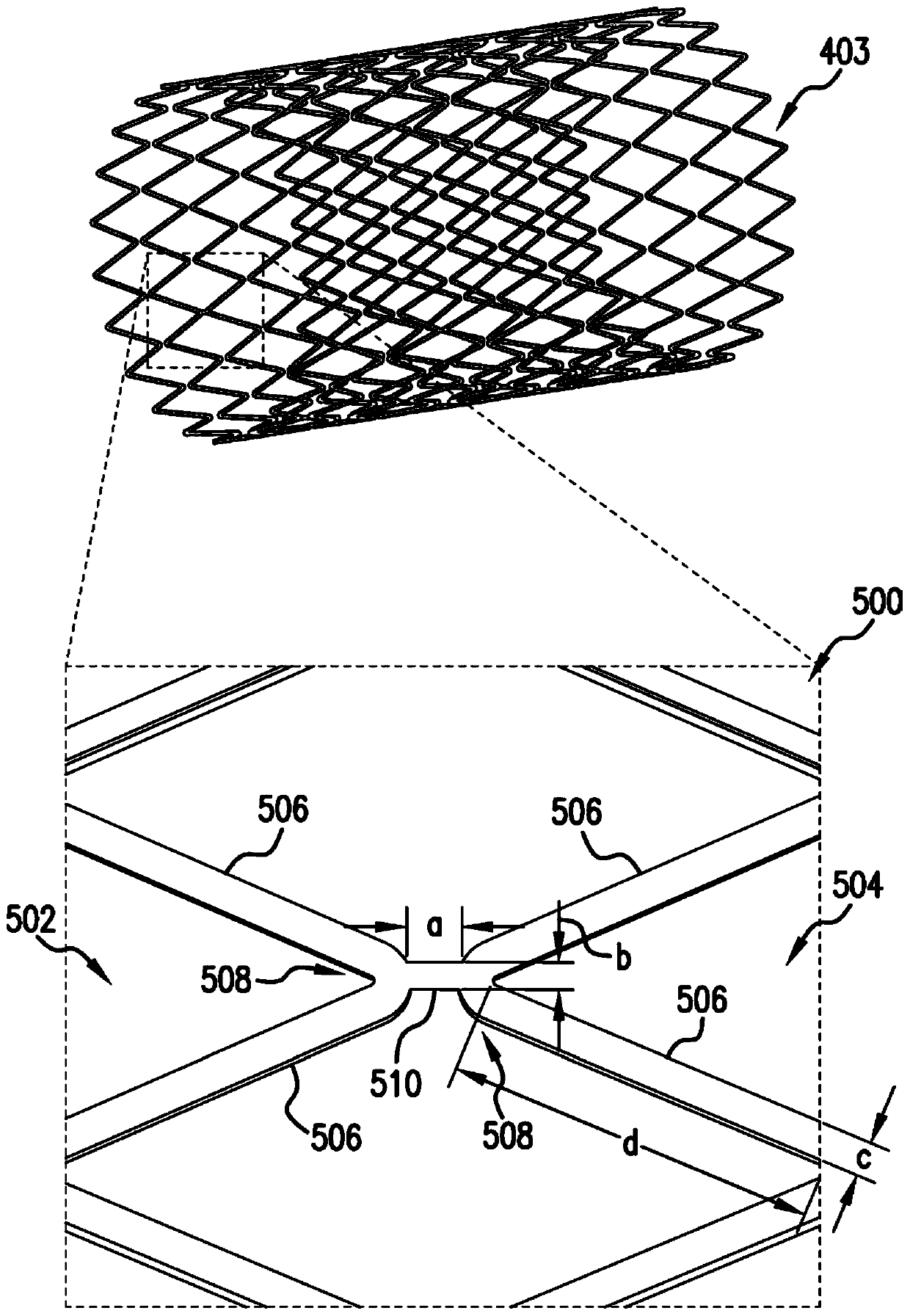Personalized coronary stents
A strut, geometric shape technology with medical applications to solve problems such as incorrect size, cell proliferation, and not fitting into the arterial wall
- Summary
- Abstract
- Description
- Claims
- Application Information
AI Technical Summary
Problems solved by technology
Method used
Image
Examples
Embodiment Construction
[0033] Based on angiograms or other imaging techniques, a detailed three-dimensional (3-D) model of a blood vessel in its narrowed state can be created. For example, standard intravascular imaging catheters use optical coherence tomography, in which radial laser irradiation produces high-resolution images. Positional information can be obtained by providing an inertial measurement unit ("IMU") in the imaging catheter. Using the positional information, a 3D model of the inside of the blood vessel (ie the inside of the narrowed blood vessel) can be derived from the image.
[0034] In one or more exemplary embodiments, a time-varying 3-D model is generated using a camera-equipped catheter that also carries radiopaque position markers. For example, the radiopaque position markers may comprise a pair of elliptical rings secured to the catheter such that they remain stationary relative to the camera. The hoops are arranged orthogonal to each other, and since the entirety of each r...
PUM
 Login to View More
Login to View More Abstract
Description
Claims
Application Information
 Login to View More
Login to View More - R&D
- Intellectual Property
- Life Sciences
- Materials
- Tech Scout
- Unparalleled Data Quality
- Higher Quality Content
- 60% Fewer Hallucinations
Browse by: Latest US Patents, China's latest patents, Technical Efficacy Thesaurus, Application Domain, Technology Topic, Popular Technical Reports.
© 2025 PatSnap. All rights reserved.Legal|Privacy policy|Modern Slavery Act Transparency Statement|Sitemap|About US| Contact US: help@patsnap.com



